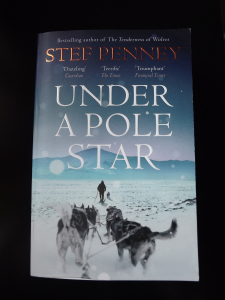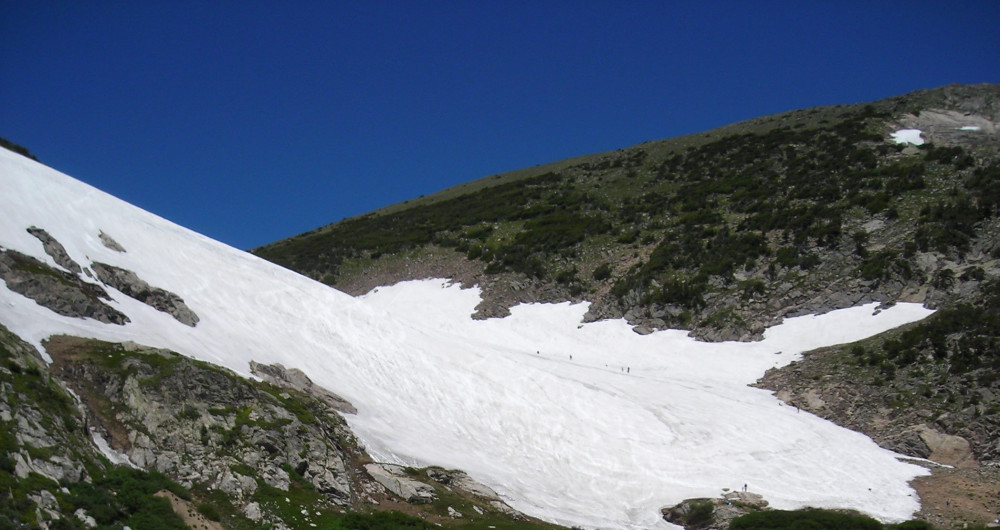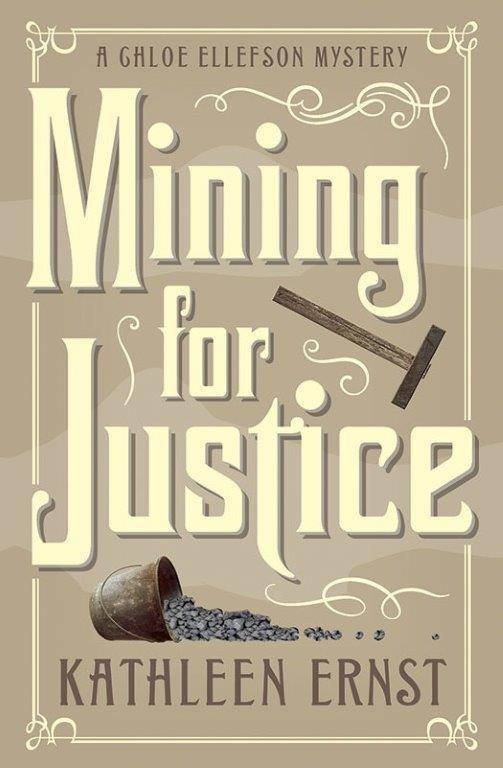 Autumn and winter are undoubtedly my favourite seasons of the year. Perhaps the fact that I have my birthday and Christmas to look forward to helps somewhat, but the cold weather and cosy nights really do create the perfect reading environment. Here in the UK our summer (or the closest we’ll get to one), is coming to an end and the weather is already starting to turn somewhat. Finding myself far too excited for the copious amounts of knitted jumpers and cosy blankets that are to come, I was more than eager to delve into a book which seemed certain to encapsulate the frostier weather we have coming our way.
Autumn and winter are undoubtedly my favourite seasons of the year. Perhaps the fact that I have my birthday and Christmas to look forward to helps somewhat, but the cold weather and cosy nights really do create the perfect reading environment. Here in the UK our summer (or the closest we’ll get to one), is coming to an end and the weather is already starting to turn somewhat. Finding myself far too excited for the copious amounts of knitted jumpers and cosy blankets that are to come, I was more than eager to delve into a book which seemed certain to encapsulate the frostier weather we have coming our way.
I have never read anything by the author Stef Penney, despite one of her previous novels winning the Costa Book of the Year. When her latest book, Under a Pole Star, arrived in the post I was thrilled. Not only is the cover beautiful and extremely fitting to the kind of weather I have been anticipating, but the book itself also sounded very interesting. The novel mainly follows Flora Mackie, a woman who first makes the hazardous journey across the Arctic Circle at the tender age of twelve. Ever since this first trip she develops a love for the place, a desire to return which will not be quenched by the inhospitable climate or the cold opinions of those who believe a woman in the nineteenth century has no place in the male dominated world of exploration. Nonetheless, Flora returns in 1892 where she encounters Jakob de Beyn, a geologist on a rival expedition. When their paths cross, they discover a shared enthusiasm for the brutal extremes of the northern world, both seeing the beauty in a place which continually attempts to thwart all those who wish to discover the dark secrets of the north.
I really enjoyed the opening of this novel. It actually takes place in the future, where we find Flora as a much older lady returning on a journey to the pole which is now much more accessible than her first forays into the north. Even so, the sense of adventure, an excitement for what is to come, is quickly established, with crucial links made into the past and an unsolved mystery which remains unearthed in this coldest of climates. From here, the novel takes a measured step backwards, returning to Flora’s youth and her first forays into travelling to the north Polar Regions with her father, a Scottish whaler. Due to this occupation I think there are obvious similarities which can be made to that of Moby Dick, especially where the realities of whaling are concerned and the deadly forces of nature. The author manages to pull these off brilliantly, providing her own commentary into this life and teaching readers along the way. Simultaneously, we then also follow a younger Jakob as he is raised in Manhattan and strives to follow his exploration dreams.
One of the things I quickly noted about this novel, and one of the things which really made it thrive, was the fact that it is very grounded in its contexts of the time. We find the characters in a world where preconceptions are beginning to be challenged, but where the patriarchy still dominated society as a whole. As is to be expected, gender ideologies and sexual stereotypes are examined vividly in this book, especially with Flora herself. The Arctic is seen, understandably, as a physically and mentally demanding location, a sphere which a woman should not be permitted to enter, especially as a leader of a group of men. Likewise, when Flora attends university we still see a clear gender divide, as although women are now able to attend University, they are still required to sit in the background and enter after the men. As Flora is told, ‘Pioneers are always laughed at’ (p. 91), but she is doubly marginalised because of her gender. Yet it is not only Flora who strives to challenge the expectations of society. The novel also explores the idea of the Victorian ‘New Woman’ in other females, especially in terms of sexuality and relationships which go against what society has always deemed acceptable. In many ways, this novel reminded me very much of The Essex Serpent, with similar ideas of the progressive woman, and a woman residing in the spaces between science and nature.
Indeed, to follow on from the above, it is fair to say that the novel is quite diverse as a whole in its techniques. We not only follow different gender perspectives, but also those of varying ages, cultures and backgrounds, with both America, Britain and the Arctic featuring. Despite these differences, especially in terms of geographically location, the novel never felt over saturated or confusing in tone, following a cohesive plot very well. I will say that the novel is extremely character driven and although there is a plot, it is of a much slower nature than what some people might prefer. I personally loved this; it allowed room for the characters to become defined, as well as being reflective of the hardships which must be physically endured to reach the Polar Regions. I think if you enjoyed The Luminaries, you would probably enjoy this. They are similar in their emphasis on characters as opposed to being wholly plot reliant, and both are literary in style, although I would say Under a Pole Star is more accessible.
As for her writing, I think Stef Penney is an extremely capable and skilled writer. She has not only managed to create a novel which extends through various places and time periods, but has also shown her ability to write something which is beautiful in its word choices. I particularly enjoyed her descriptions of ice and the wider landscapes of the northern regions. She manages to sustain a tension between its beauty and its brutality which is quite often evocative of the sublime. I particularly liked this descriptive passage:
‘The water, a sheet of tarnished silver. Across the bay, dark cliffs, scored and wrinkled, their gullies highlighted by the sun; overhead, a pale sky – all mirrored in the stillness. To the east, at the head of the fjord, the white tongue of a glacier protrudes into the water. It looks inviting- such a gentle slope – a broad highway beckoning her into the interior.’ (p. 449).
I think Penney also writes with a good knowledge which has obviously come from a lot of careful research. Her novel is insightful, without being overbearing or too dry. I found myself learning a lot about the night skies, especially the changing Polar Star, which I had never really learned about before. The thing which really shone through for me though, and something I almost wish the novel had explored to an even greater degree, was the way the novel examined the Inuit people and their culture. The northern regions are spectacular but notoriously difficult to survive in, and I found it completely enthralling to learn about a culture I have never really been taught anything about. Not only does the author detail their lives and the hardships they have become accustomed to, she also allows us to become further attached to certain characters, crossing cultural divides. Words from the Inuit language are also used to great effect, blending seamlessly into the narrative whilst we are also provided with a handy glossary in the back of the book.
If there was one thing within this book which I wasn’t overly keen on, it was the sexual scenes which take place. I have nothing against graphic or detailed sexual encounters, and I do actually think they were needed in this case to establish certain relationships and to highlight the intensity of certain emotions. Having said that, I don’t think the various scenes were needed quite as much as they were used. I found some of the narration to become quite repetitive in these instances, and did not feel that we gained much by them. In some cases, I even found it slightly boring and monotonous which seemed at odds with the rest of the novel. I also found myself becoming quite skewed in my views towards the majority of the men in this novel. For the most part, all of them take up mistresses or commit adultery with little qualms for their partners back home. I can see how some of this infidelity would have occurred in various instances, especially where the body had been pushed to the extreme, but it did annoy me slightly and feel as if the men were being tarnished with an all to similar brush.
Contrastingly, I thought Flora and Jakob’s relationship was executed very well. I liked that the author kept the dynamics between these characters very real and raw, yet still highly emotive. There were some scenes, especially towards the end, which were extremely poignant and often tragic, and I think it was brave of the author to accept the challenge of writing such things. I also really liked the fact that these two central characters were not always completely likeable; they both do things or commit acts which I didn’t necessarily agree with, but with shaped their characters and represented humanity perfectly well.
As I am sure if quite obvious, I truly enjoyed this novel. I think Stef Penney is a brilliant writer, and is able to evoke climates and character traits especially well. Whilst I was left wanting more of some bits and less of others, as a whole it was extremely cohesive, engaging and just generally entertaining. If you are a fan of character driven novels, or of these colder climates and exploration, than I would without a doubt recommend this fantastic novel to you. I can’t wait to go back and read some of her older works now!
Publisher: Quercus
Rating: 4*/5*
Disclaimer – I was very kindly sent this book in exchange for a review. I will only ever post my own, honest opinions and will NOT write a favourable review in exchange for a complimentary book.
Advertisements Share this:






